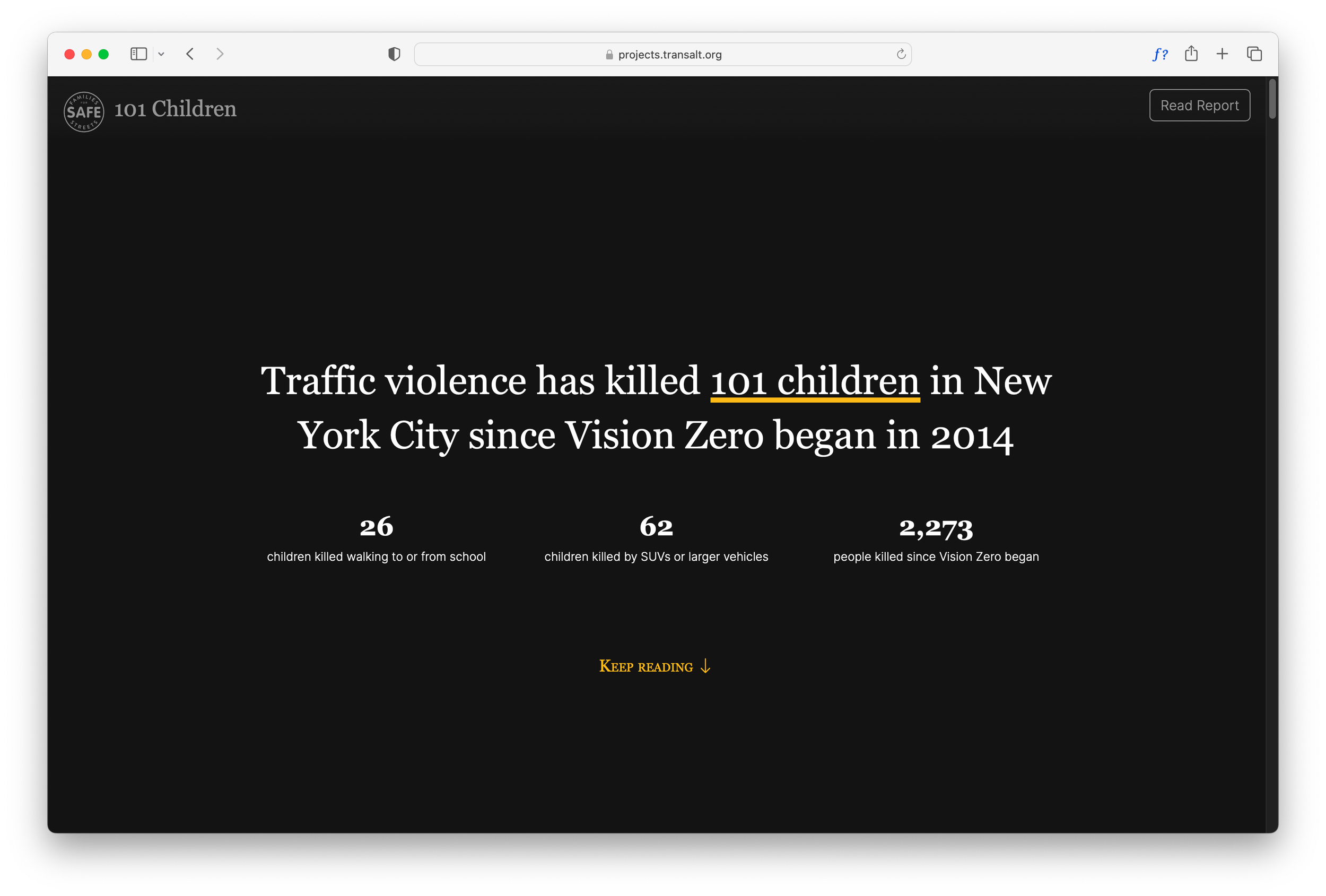
Blog
Videos, graphics, news, and research from Transportation Alternatives’ work to reclaim New York City’s streets from cars.
The Future Congestion Pricing Zone is Polluted and Dangerous. Congestion Pricing Will Help.
Pricing access to this area is expected to reduce congestion, improve bus speeds, lower air pollution and asthma rates, and decrease pedestrian injuries by as much as 20%.
Fewer Pedestrian Plazas Have Been Built in the Communities Where the Most Black, Latino, and Asian New Yorkers Live. Increasing Plaza Construction is the Answer.
With a new Office of the Public Realm, the City of New York has the potential to bring these benefits to all New Yorkers, however, the following findings make clear that to date, the benefits of pedestrian plaza access have been very unequally distributed.
Bus Commutes Are Significantly Longer for Low-Income, Black, and Latino Bus Riders. Dedicated Space for Buses is the Solution.
New York City buses are the slowest in the nation, averaging less than eight miles per hour, thanks to abundant traffic congestion and a dearth of dedicated bus lanes.
Flood Risk is Much Higher in Black Communities. Traffic-Calming Green Infrastructure Can Help.
Our stormwater infrastructure is already overburdened and many neighborhoods periodically flood, and yet New York City is projected to receive 10% more rain and one foot of sea level rise by the 2030s, which will further endanger our most vulnerable communities.
How you can show your support for congestion pricing
You can tell the MTA you support congestion pricing in two minutes or less.
How Regulating Delivery App Companies Will Make Our Streets Safer
Our new comic explains how we can reign in the delivery app companies that are contributing to the chaos on ou streets.
14 Reasons to Celebrate NYC Streets in 2023
Whether you signed a petition, attended an event, went to a community board meeting, or talked to your neighbors about safe streets, you fueled our many shared achievements in 2023.
Let’s House People, Not Cars
Parking mandates require a specific number of parking spaces for new developments — perpetuating the cycle of car dependency.
NYC Comptroller Brad Lander On What’s Next For The Dangerous Vehicle Abatement Program
Driving a car is not a fundamental right — and when our fellow New Yorkers prove they are dangerous drivers, we must hold them accountable.
What’s Better Than a Speed Hump?
We hear it all the time: “So many people speed on my street. We need a speed hump.” But there are actually better ways to slow down traffic!
More Cars Is Bad, Actually
Allowing unlimited, electric for-hire vehicles on our streets isn’t good.
Open Letter from the NYC Bike Family to Mayor Adams
As members of the NYC Bike Family, we are advocates, educators, social ride leaders, business owners and, most importantly, New Yorkers who want to ride to work or take our kids to school without the constant threat of death or serious injury.
Today, Much of New York City Is Underwater. New Yorkers Need Real Action Now.
Climate change is only making extreme weather more common.
It’s Time to Fix Canal Street
Pedestrians make up 64% of all people using Canal Street, yet we give cars and trucks the majority of the street space.
E-Bike Registration Won’t Make Our Streets Safer
A registration requirement would be a costly and inefficient program that would not achieve the intended goal.
Why New York City Needs Demand-Based Metered Parking
Free curb parking costs New Yorkers so much – wasted time, congested traffic, and polluted air.
Memorial for the 101 Children Killed in Traffic Violence Since Vision Zero Began
Our children deserve the chance to grow up.
Meet the 2023 Field Ambassadors
Our Field Team is back for the summer! Our team of ambassadors are out and about across New York City talking about our campaigns, activism, and work in all five boroughs.
E-Micromobility Frequently Asked Questions
E-micromobility has already transformed the way that New Yorkers get around. Going forward, e-bikes and e-scooters offer a tremendous opportunity to shift New Yorkers out of cars, revolutionize freight delivery, reduce traffic fatalities, and make more of our city accessible.




















